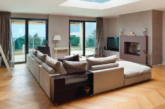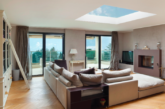
A lack of consideration for natural daylight in home design is depriving UK homeowners of natural daylight during the winter, according to new research by Velux.
According to the research, half of UK homeowners feel that they do not have enough daylight in their lives during the winter months. Around the same number say that this lack of exposure to natural daylight negatively impacts their mood during the winter. Given the amount of time we spend at home during these months, we become more reliant on our homes offering access to natural daylight. However, 27% of homeowners do not feel that their homes have been adequately designed to let in enough natural daylight from the outside.
One in five (22%) are keen to do something about it, by making improvements to their home through measures such as converting loft space, brightening up darker spaces, redecorating with brighter colours, building an extension with roof windows or retrofitting windows into existing extensions.
Grant Sneddon, Product Manager at Velux, said: “For many of us in the UK, putting the clocks back for daylight saving time can be associated with a dip in mood as we prepare for the winter ahead. However, as our research shows, we still don’t make the most of natural daylight when it comes to designing our homes. This daylight factor is even more significant during the winter months, when we tend to spend much more time indoors. However, there are many modifications we can make to our homes to help bring the outside in, and provide homes with access to natural daylight which can help to beat the winter blues.”
To help homeowners increase the amount of daylight entering their homes, Velux has provided five top tips:
- For single storey extensions, don’t just rely on bifold doors. Bringing in daylight through the roof can let in twice as much daylight. For dark, confined spaces with access to a roof, consider the use of sun tunnels.
- Positioning of vertical and roof windows is extremely important to achieve the optimum daylight levels and effects. Ensure that you get the right balance between light intensity and light coverage. The desired spread of light will have an influence on where windows are positioned and also on the size of windows.
- Consider how you can maximise the light once it is inside the house. For example, use high-level roof windows to provide natural daylight into the rear of the home where use of vertical windows might not be possible due to adjacent buildings.
- The more daylight you bring in the greater the need to control it. Decorative blinds, curtains and different glazing options can help to do this.
- Not only do you need to consider how and where daylight enters, but just as important are the internal finishes. Bright walls, ceilings and floors can bounce and reflect daylight into areas that would otherwise be quite dark.








